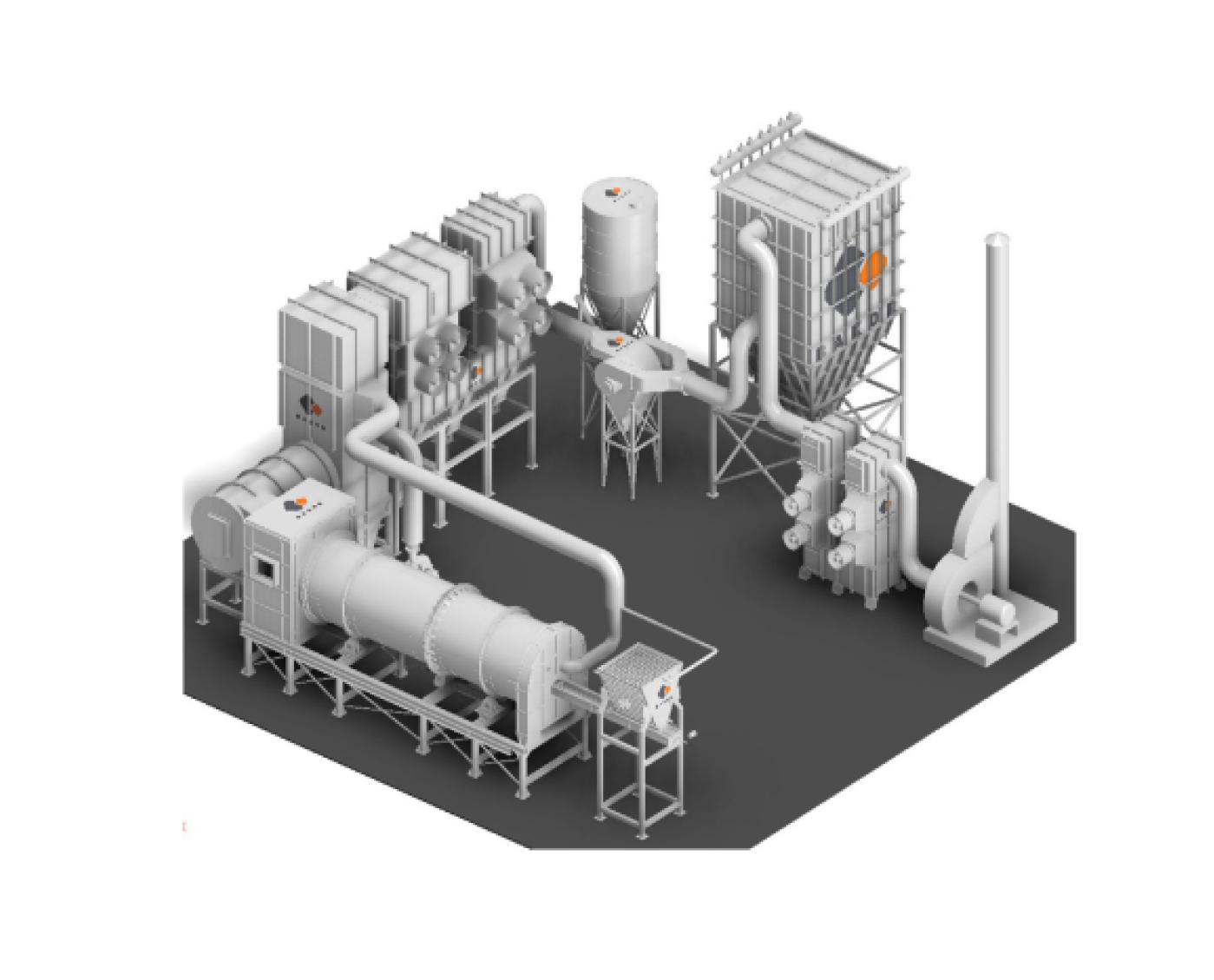511
Working principle:
Incinerator by Bakor STC, based on a chamber furnace with a liquid module. The thermal neutralization process occurs at temperatures ranging from 800°C to 950°C. The flue gases generated as a result of thermal destruction of waste go to the afterburning chamber of the incinerator, in which, at a temperature of 1200 degrees, the thermal decomposition of hazardous components takes place. After the afterburning chamber, the gases are directed to the plate heat recuperator, where the flue gases are quenched and cooled down to 350 degrees centigrade.
After the recuperator, the flue gases are pre-cleaned in a centrifugal filter from coarse ash particles and directed to a ceramic filter for the complex purification of flue gases from CO, NOx, SOx, HCL, HF, VOC and dioxins.
Advantages:
- Sanitary protection zone of less than 50 metres
-
No liquid effluents from the plant
-
Discharged slag from the furnace and ash from the ceramic filter has the 4th class of hazard and can be disposed to the landfill.
-
The integrated gas purification system is realized in a single unit, comprising a reactor and ceramic filter.
Wastes subject to thermal neutralisation:
No alternative (only incineration): medical waste of classes B (rus. Б), V (rus. В), partly G (rus. Г).; secret archives, products of the State Treasury, etc.; pharmaceutical production waste, drugs and substances; Waste of forensic medical examination services; corpses of infected and compulsorily killed animals and birds; phyto- and veterinary confiscates, quarantine material; hair; chemical weapons; counterfeits, confiscates.
As an alternative to removal to special landfills:
Oil sludge, oil-contaminated soils, oil sorbents, etc..., solvents: toluene, acetone, etc.; flare and stripping gas; gas condensates, ethylene glycols, petrol, etc.; used motor oils, coolants; transformer oils containing super toxicants: sovol, sovtol, etc.; toxic wastes with high content of chlorine, fluorine, phenol, iodine, bromine, etc.; pesticides, herbicides, herbicides, etc.; pesticides, herbicides, etc. pesticides, herbicides and other agricultural pesticides; biological waste: corpses of animals, birds, etc.; sewage sludge (cakes); oily rags; oil filters; old wooden railway sleepers impregnated with creosote and other compositions. Car tyres and other rubber products; car batteries, electronic and cable scrap, foil paper, photo-cinema materials.
Alternative to landfill disposal or utilisation (recycling):
Medical waste class A; organic "tailings" from MSW and PO sorting - IV hazard class; water-based drill cuttings; wood waste: container scrap, shortcuts, etc.
Wastes prohibited for thermal neutralisation:
Explosives, gunpowder, etc.; tightly corked containers: paint cans, empty fire extinguishers, aerosol cans, etc.; mercury-containing waste: daylight bulbs, appliances; acid-containing waste: electrolytes, batteries, etc. etc.; Freons: chloroform, carbon tetrachloride, etc.; Persistent organic pollutants: aldrin, chlordane, dieldrin, endrin, heptachlor, hexachlorobenzene, mirex, toxaphene, etc.; Waste containing super toxicants: chloroform, carbon tetrachloride, etc. Wastes with the content of super toxicants more than 1%.
